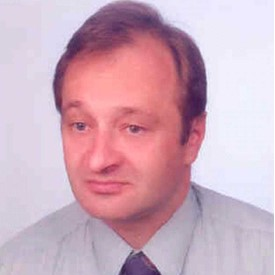Pattern Recognition and Medical Data Analytics in Telemedicine
A special issue of Applied Sciences (ISSN 2076-3417). This special issue belongs to the section "Biomedical Engineering".
Deadline for manuscript submissions: closed (20 December 2023) | Viewed by 15978
Special Issue Editors
Interests: pattern recognition; telemedicine; machine and deep learning; biomedical data analysis; medical data
Interests: biomedical engineering; artificial intelligence; pattern recognition; machine vision; machine learning; medical sensor
Special Issues, Collections and Topics in MDPI journals
Interests: bioinformatics; biosensors; biomedical signals processing; miomedical image processing medical technology and medical devices
Interests: image analysis; outcome measures; PROMIS; survey; survey methodology
Special Issues, Collections and Topics in MDPI journals
Special Issue Information
Dear Colleagues,
Telemedicine is a rapidly evolving healthcare delivery mechanism via hardware and/or software through which consultation, medical assistance, and information can be communicated over the computer networks. There are many definitions of “Telemedicine”—each specific to the primary target of interest. During the COVID-19 pandemic, the importance of telemedicine increased. The reasons for applying telemedicine include: Separation or necessity to maintain social distance and distance between persons and/or resources; Conscious and more and more common use of telecommunications technologies; Dissemination and availability of data from smart and wearable sensors; Development of computing infrastructure and improvements of machine learning algorithms with the full inclusion of Artificial Intelligence; Optimization of costs and resources in healthcare. Background: Telemedicine has been around since the late 1980s, however, in the last two years there has been a significant increase in considerations and research regarding telemedicine, along with the growing importance of the development of mobile application implementation and production technology of sensors monitoring medical quantities. In this Special Issue, we would like to attract innovative and original research papers describing the latest research in the field of medical-based, engineering-based behavior. We also present a Special Issue to all those who wish to present their work in the area of health market management related to the use of sensor-based telemetry systems, using a wide range of artificial intelligence methods, including pattern recognition and machine learning algorithms. Potential topics include, but are not limited to:
- Artificial Intelligence;
- Cybersecurity processing of medical data;
- Medical Data Analytics;
- Future of Medical Data Analytics, Pattern Recognition and Telemedicine;
- Machine Learning, Deep learning in Telemedicine application;
- Pattern Recognition;
- Personalized healthcare;
Dr. Rafal Doniec
Prof. Dr. Marcin Grzegorzek
Prof. Dr. Ewaryst Tkacz
Prof. Dr. Wojciech Glinkowski
Guest Editors
Manuscript Submission Information
Manuscripts should be submitted online at www.mdpi.com by registering and logging in to this website. Once you are registered, click here to go to the submission form. Manuscripts can be submitted until the deadline. All submissions that pass pre-check are peer-reviewed. Accepted papers will be published continuously in the journal (as soon as accepted) and will be listed together on the special issue website. Research articles, review articles as well as short communications are invited. For planned papers, a title and short abstract (about 250 words) can be sent to the Editorial Office for assessment.
Submitted manuscripts should not have been published previously, nor be under consideration for publication elsewhere (except conference proceedings papers). All manuscripts are thoroughly refereed through a single-blind peer-review process. A guide for authors and other relevant information for submission of manuscripts is available on the Instructions for Authors page. Applied Sciences is an international peer-reviewed open access semimonthly journal published by MDPI.
Please visit the Instructions for Authors page before submitting a manuscript. The Article Processing Charge (APC) for publication in this open access journal is 2400 CHF (Swiss Francs). Submitted papers should be well formatted and use good English. Authors may use MDPI's English editing service prior to publication or during author revisions.
Keywords
- Artificial Intelligence
- medical data analytics
- machine learning
- deep learning
- cybersecurity
- eHealth
- mHealth telerehabilitation
- telediagnostics
- patient-oriented outcomes, personalized healthcare, digital modeling
Benefits of Publishing in a Special Issue
- Ease of navigation: Grouping papers by topic helps scholars navigate broad scope journals more efficiently.
- Greater discoverability: Special Issues support the reach and impact of scientific research. Articles in Special Issues are more discoverable and cited more frequently.
- Expansion of research network: Special Issues facilitate connections among authors, fostering scientific collaborations.
- External promotion: Articles in Special Issues are often promoted through the journal's social media, increasing their visibility.
- Reprint: MDPI Books provides the opportunity to republish successful Special Issues in book format, both online and in print.
Further information on MDPI's Special Issue policies can be found here.








